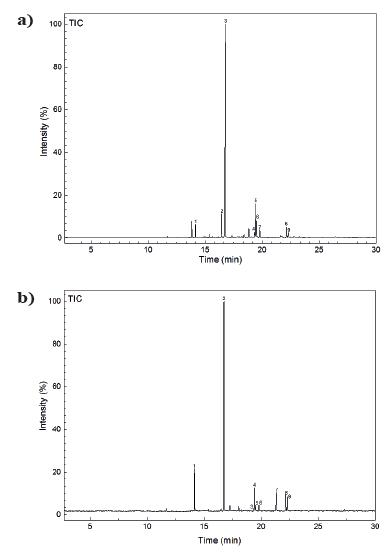Algae Multi-Component Quantitative Profiling Services
Unveiling the Secrets of Algae: Reliable Analysis Services for Every Need
Algae are a potential source of biofuels and biomaterials. Understanding the chemical composition of algae helps to explore their commercial applications. Creative Biolabs has a complete separation, characterization, identification, and quantification system to provide extensive, reliable, rapid, and efficient algae composition analysis services. We aim to understand the composition of algae in detail through comprehensive analysis and help our clients make in-depth explorations of the nutritional value of algae, optimize the processing technology, and develop potential applications.
As a result of our extensive experience in the analysis of a wide range of Biomasses such as algae, and Lignocellulose, we have developed several quantitative techniques. These methods for the analysis of algal constituents have excellent stability, reproducibility, high sensitivity, and high accuracy.
-
Ion chromatography: This method is used to analyze carbohydrates from algae. It has excellent retention and separation, good reproducibility, and high sensitivity for saccharides.
-
Gas chromatography-mass spectrometry (GC-MS): We detect feel sterol, fatty acids, etc., in algae samples by GC-MS. The method is simple and reproducible and has great advantages in sensitivity, selectivity, high throughput, and analysis rate.
Our algae composition analysis services apply to different types of algae samples. Depending on the client's research needs and sample type, we develop tailored protocols and perform detailed analyses of the following components in algae.
Based on an optimized ion chromatography system, Creative Biolabs analyzes the content of individual monosaccharides to obtain useful information about the carbohydrates in algae.
Creative Biolabs accurately quantifies fatty acids such as decanoic acid, caprylic acid, oleic acid, behenic acid, arachidic acid, etc., in algae.
Creative Biolabs provides a reliable free sterol (ergosterol, cholesterol, stigmasterol) analysis for algae by an efficient GC-MS system.

Advantages of Algae Chemical Composition Analysis Services
-
Experienced researchers: We have a team of technicians with extensive knowledge and experience in the field of algae analysis, using highly efficient techniques for accurate and reliable analysis of algae constituents.
-
Comprehensive analysis: Our algae composition analysis services offer a wide range of analytical options to meet the different research needs of our clients.
-
Quality assurance: We follow a strict project management system to ensure that the entire analytical process is carried out efficiently and the results are accurate.
At Creative Biolabs, our expertise, efficiency, comprehensive reporting, and superior customer service have made us a leader in algae research. Not only do we offer comprehensive algae composition analysis services, but we also provide valuable insights into the results. Please feel free to contact us to learn more about algae analysis if you have a need or question in this area.
Published data
Algae contain a variety of biologically active substances, including fatty acids and sugars. Understanding these compositions is important to explore the applications of algae in food, medicine, etc. In this study, the composition of fatty acids in two algae was examined by GC-MS, and their antioxidant activities were evaluated. The researchers found that the fatty acid composition in the two algae differed and had some antioxidant activity. This study provides support for us to detect and analyze fatty acids in algae.
 Fig.1 Chromatograms of two algal fatty acids.1, 2
Fig.1 Chromatograms of two algal fatty acids.1, 2
FAQs
Q1: Why is the chemical composition analysis of algae important?
A1: Chemical composition analysis of algae is important for algal research. In addition to providing useful information for mining the nutritional value of algae and biofuel production, it is also used to identify valuable bioactive compounds for pharmaceutical applications.
Q2: What techniques are commonly used for chemical composition analysis of algae?
A2: We combine a variety of techniques, including ion chromatography and GC-MS, to detect fatty acids, carbohydrates, sterols, etc., in algae.
Customer Review
Outstanding Algae Analysis
"Creative Biolabs was excellent at analyzing the composition of their algae. They used state-of-the-art equipment and followed a strict project management system to ensure accurate and reliable results. Their interpretation of the data also provided us with valuable insights for analyzing the algae composition results and further research. We would work with them again if the need arises in the future."
High-quality and Efficiency for Algae Composition Testing
"Creative Biolabs was to be commended for the efficiency of their services. From the initial communication to the delivery of the final algae composition analysis report, the whole process was very efficient and smooth. They completed the analysis of various substances in algae quickly without compromising the quality of the results, which saved us a lot of time and allowed us to move forward quickly with subsequent research."
References
-
ALENCAR, DANIEL B., et al. "Fatty acid composition from the marine red algae Pterocladiella capillacea (SG Gmelin) Santelices & Hommersand 1997 and Osmundaria obtusiloba (C. Agardh) RE Norris 1991 and its antioxidant activity." Anais da Academia Brasileira de Ciências 90 (2018): 449-459.
-
Under Open Access license CC BY 4.0, without modification.
For Research Use Only.
Related Services


 Fig.1 Chromatograms of two algal fatty acids.1, 2
Fig.1 Chromatograms of two algal fatty acids.1, 2

